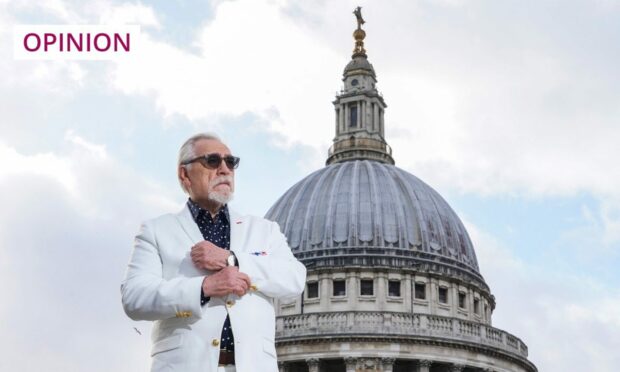I’m writing this in the wake of a Big Television Event. The four-season-long 1%-er family epic Succession, rich in creative swearing and complicated depictions of the effects of inherited trauma, came to a close at the start of the week, spawning a thousand think pieces and a billion memes.
Succession’s final weeks were backgrounded by a high-profile strike by the members of the Writers Guild of America (WGA), which has brought a number of the biggest television shows being made in the US (and watched throughout the English-speaking world) to a halt for a month now.
One of the main issues the writers are striking over is AI-generated scripts, which they’ve asked studios to promise they won’t use in their productions. The studios – possibly wowed by a vision of a world being sold to them by Silicon Valley in which first-draft screenplays and concept art can be generated at the touch of a button, then reworked by humans without those pesky creator credits and their accompanying pay cheques – are currently refusing.
The big media buzz around Succession has allowed the striking writers and their supporters (including famous members of Succession’s cast on their exit interview circuit) to point to the show as an example of the sort of work that could only be created by humans.
Like a lot of people these days, I consume my “prestige TV” in a very era-specific way – once I’ve watched an episode, I like to wallow in analysis: both excellently-written longform blogs on sites like Vulture, The AV Club and Rolling Stone, and the comments sections underneath, where you can find the thoughts of hundreds, possibly thousands, of viewers.

In Succession, the characters are capricious and messy. They make split-second turns and unpredictable decisions.
Without wanting to give too much away (very mild spoilers follow), two of the most analysed moments of the programme’s last episode involve one character having a surprising eleventh-hour change of heart, and a morally and emotionally ambiguous embrace.
Since the finale aired, the debate and examination over what those two events meant has become frenzied. Succession’s audience has become so invested in its characters that they work them like puzzle boxes, suggesting myriad different reasons for and interpretations of these key moments, with backup drawn from each character’s history.
This connection feels as authentic as any connection with fictional characters can because of the mess – the logic-defying, splurgy humanity that only messy, logic-defying human brains could have understood and created. One of the most widely shared images from the WGA strike is of a woman holding up a sign that reads: “ChatGPT doesn’t have childhood trauma”.
Messy humanity can’t be replicated by AI
Cards on the table: as a writer, as someone who earns the majority of her income from writing, of course it’s in my interest to find ways to explain (even just to myself) that my job is not going to be replaced by a robot. But, between Succession and another example of extraordinary writing I’ve had the pleasure of this week, I’m feeling gently (hubristically?) confident that humanity will always need that particular authenticity in the stories we tell ourselves.
At the opposite end of the spectrum from the horrendous billionaires of Waystar Royco is Rural, a non-fiction book by debut writer Rebecca Smith, which publishes next week. Subtitled “the lives of the working class countryside”, this book takes its reader on a journey the length and breadth of the UK, understanding through its author’s eyes and ears.
Smith, who grew up as the daughter of a forester in a tied cottage on a big estate in Cumbria and whose grandparents were miners and mill workers, is uniquely positioned to harvest the stories of rural and ex-rural working-class communities and turn them into something approaching magic.
The announcement about Rural is in the Bookseller today! For anyone who cant read the article, it says ‘Bringing together memoir, history, nature writing and a sociopolitical perspective, Smith reveals the overlooked stories of the countryside.’
And this is the front cover! 🥰 pic.twitter.com/XdN1JWUArb— Rebecca Smith (@beckorio) January 26, 2023
Her travels take her as far north as Shetland, through generations of water developments in the Highlands, mines in rural Wales, the cotton mills of New Lanark, the second-home and Airbnb plagues of the Hebrides and Lake District. Certainly, an AI chatbot couldn’t physically travel to these places, offer eyewitness accounts of their beauty and challenges, or conduct the sensitive, personal interviews Smith does with the people who live and lived there.
But Rural ascends to beauty because it manages something more than simple reportage. Smith is of the land; rural life is her blood and her history. She narrates the pregnancy that bloomed during her research, the writing poignantly undershot with a sense of belonging she worries her children won’t have.
“I am rooted in places whether we own them or not, whether I am still there or not. Maybe it’s a bit like being a dandelion. I can settle almost anywhere as long as there is a bit of soil.”
This book is tender, glowing, vitally important stories whispered into an ear, and I refuse to believe there will ever be a time when it could be replicated by algorithm.
Kirstin Innes is the author of the novels Scabby Queen and Fishnet, and co-author of non-fiction book Brickwork: A Biography of the Arches

Conversation